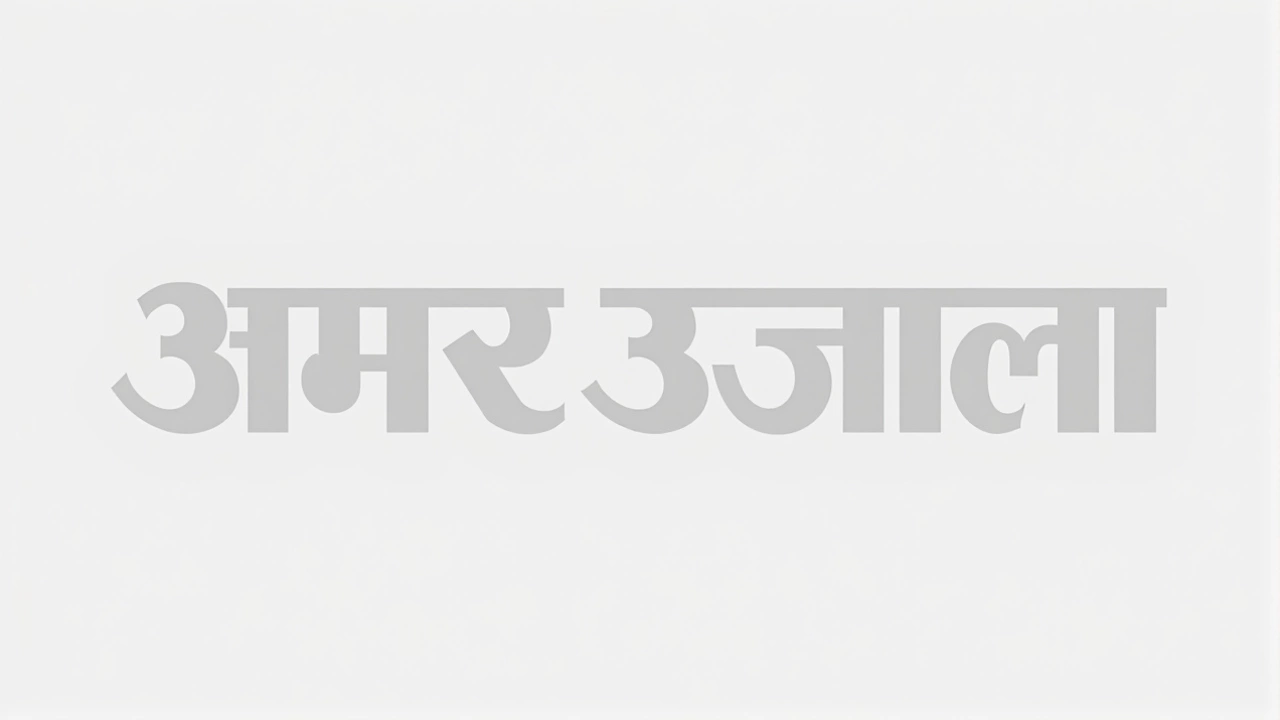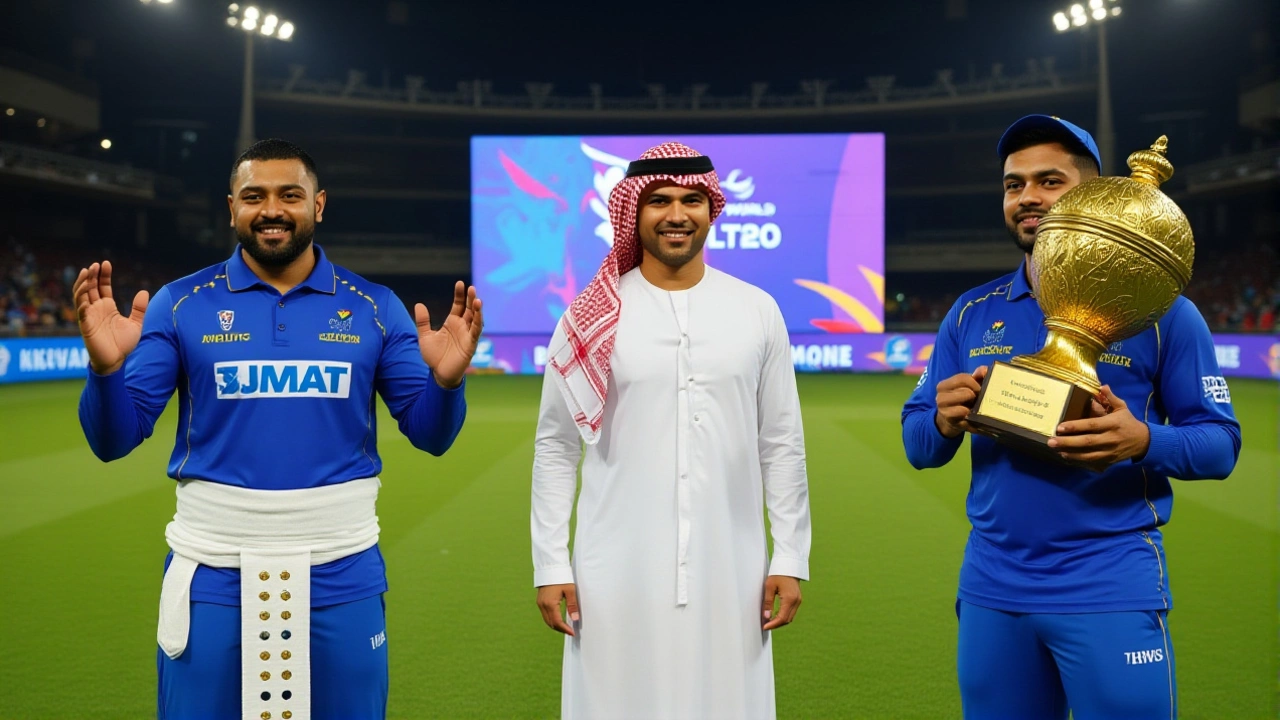When Rahul Chopra stepped onto the pitch at the Dubai International Stadium on October 28, 2025, he wasn’t just wearing the UAE jersey — he was carrying the hopes of a nation on the brink of cricketing history. The 30-year-old Emirati wicketkeeper-batter, born in Dubai to Indian parents and naturalized in 2018, has been handed the captain’s armband for the most critical stretch of the ICC Cricket World Cup League 2Dubai campaign, with four matches against the USA and Nepal determining whether the UAE qualifies directly for the ICC Men's World Cup 2027South Africa. It’s not just about wins. It’s about survival.
Why This Series Matters More Than Any Before
The UAE currently sits seventh in the ICC Cricket World Cup League 2 standings with 48 points from 24 matches — just three points ahead of the bottom-placed team. To have any shot at direct qualification to the 2027 World Cup, they need at least 12 points from these four home games. That means winning three out of four. No room for error. No room for hesitation.
Only the top three teams earn automatic entry. Fourth through seventh must fight again in a final qualifier tournament. For a country that’s never made it to a World Cup final stage, this is the closest it’s ever been. And it’s happening right here, on home soil.
Chopra: From Backup to Captaincy
Chopra didn’t start as the obvious choice. He was the understudy — a steady hand behind the stumps, a reliable middle-order bat with a knack for finishing. But after Muhammad Waseem stepped down in October 2024 following a string of six straight losses, the Emirates Cricket Board looked for someone who could stabilize the ship. Chopra, 29 at the time, had already shown leadership in the domestic T20 league, captaining Dubai Capitals with composure under pressure.
His stats tell part of the story: 403 ODI runs across 16 matches, including a maiden century — 101 against Scotland on May 8, 2025, in Amstelveen. But it’s his fielding that’s quietly revolutionary. With 29 catches in 38 T20Is and 7 in ODIs, he’s the most reliable gloveman in the squad. Now, he’s also the captain. A dual role no one else in the team can fill.

The Squad: Experience Meets Youth
The 15-man squad announced on October 24, 2025, is a deliberate blend. Veterans like Muhammad Waseem (31), Junaid Siddique (33), and Alishan Sharafu (25) bring grit. Meanwhile, 22-year-old Aryansh Sharma, the backup wicketkeeper, represents the future — fast, fearless, and hungry.
Behind the scenes, the coaching staff is just as pivotal. Head coach Lalchand Rajput, 63, a former Indian domestic star and ex-coach of Afghanistan, has been with the UAE since January 2024. He’s the man who turned their batting from erratic to structured. Performance director Ravinder Chadha, 55, has overseen a complete overhaul of fitness protocols since March 2024 — a move that’s cut injury rates by 40% in the last 18 months.
The Stakes: Beyond the Points Table
This isn’t just about World Cup spots. It’s about legitimacy. The UAE cricket board has spent the last decade trying to shake off the image of a ‘T20 minnow’ — a team that plays flashy cricket but can’t sustain it over five days. This ODI campaign is their chance to prove they belong among the game’s emerging nations.
And the crowds are starting to notice. Ticket sales for the Dubai International Stadium matches have already surpassed 18,000 — the highest for any UAE home series since 2019. Families are bringing kids. Schools are organizing trips. The national broadcaster, beIN Sports, has committed to live coverage across 17 countries.

What’s Next? The Road Doesn’t End in Dubai
Even if the UAE wins all four matches, the journey isn’t over. They still have away fixtures in Nepal in February 2026 and the USA in April 2026. But a strong home finish would shift the narrative. Right now, they’re underdogs. If they win three of these four, they become contenders.
Team manager Faisal Hasnain confirmed all players reported for mandatory pre-series training on October 22, 2025, at the UAE Cricket National High Performance Centre in Dubai Sports City. Physio Dr. Ahmed Al Marzouqi has been monitoring recovery post-DP World ILT20, ensuring no one’s playing through lingering niggles.
Chairman Aref Al Awani put it bluntly: “We’re not building for tomorrow. We’re building for 2027. And Rahul Chopra is the man to lead us there.”
Frequently Asked Questions
How does this affect UAE cricket’s future?
A successful campaign could unlock major funding from the ICC and attract sponsorships from regional conglomerates like DP World and Emirates. More importantly, it would validate the UAE’s investment in youth academies and domestic leagues, potentially leading to permanent ODI status and inclusion in future global tournaments. Failure, however, could trigger a leadership overhaul and delay infrastructure upgrades.
Why is Chopra’s dual role as captain and wicketkeeper significant?
Only three captains in ODI history have regularly kept wicket while leading — MS Dhoni, Adam Gilchrist, and Kumar Sangakkara. It’s a rare combination that demands elite concentration and stamina. Chopra’s ability to handle both roles gives the UAE tactical flexibility, reducing reliance on substitutes and allowing the captain to stay involved in every ball — a psychological advantage in tight matches.
What’s the UAE’s best-case scenario in this series?
Winning all four matches would give them 64 points — enough to jump to fourth place, potentially forcing a playoff with Nepal or USA for third. Even if they finish fourth, they’d still reach the World Cup Qualifier. But a clean sweep would make them the first associate nation to win all home fixtures in a League 2 cycle — a milestone that could change how the ICC views their program.
Who are the key players to watch besides Chopra?
Alishan Sharafu, the 25-year-old all-rounder, has scored 750+ runs in the last 12 ODIs and is the team’s most consistent batsman. Junaid Siddique, the 33-year-old pace spearhead, has taken 19 wickets in his last 10 matches. And Aryansh Sharma, the 22-year-old backup keeper, could be the wildcard — his aggressive batting at No. 7 has already drawn comparisons to David Miller.
How does this compare to past UAE World Cup campaigns?
In 2015, the UAE failed to qualify through the Asia Cup. In 2019, they lost all six group games. This time, they’re playing at home, with a settled captain, a clear strategy, and a coaching staff with international experience. The difference? This isn’t a team trying to survive — it’s a team trying to rise.
What happens if the UAE doesn’t qualify?
The Emirates Cricket Board has already signaled a potential restructuring of the national program, possibly shifting focus to T20I development and regional tournaments. But more critically, it could delay the UAE’s push for Test status — a goal they’ve publicly targeted since 2022. Without ODI success, the path to becoming a Full Member of the ICC becomes significantly harder.
